
A Brief History
Nittany Lion Shrine
More than just a campus landmark, the Nittany Lion Shrine is an emotional touchpoint for Penn Staters everywhere.
A Symbol of Strength and Spirit
"Every college the world over of any consequence has a college emblem of some kind—all but The Pennsylvania State College. . . . Why not select for ours the king of beasts—the Lion!! Dignified, courageous, magnificent, the Lion allegorically represents all that our College Spirit should be, so why not 'the Nittany Mountain Lion?' Why cannot State have a kingly, all-conquering Lion as the eternal sentinel?"
Wrote H. D. "Joe" Mason, a Penn State senior, in the March 1907 issue of a student publication. (Michael Bezilla, "Penn State: an illustrated history," 1985)
Through the Ages
Take a look into the journey of Penn State’s Nittany Lion Shrine, from conception to modern renovations and repairs, and explore the traditions that have shaped this iconic symbol. Click through to discover the story behind one of Penn State’s most beloved landmarks.
Although difficult to imagine, for most of Penn State’s history, there has been no Lion Shrine as we know it today. While there was spirit and pride, there was not yet a sculpture to capture it. One of the earliest iterations of the Nittany Lion was actually made from paper mâché. | University Park, 1910
A 13-ton block of Indiana limestone, which would later become the Nittany Lion Shrine, was loaded off the back of a flatbed truck onto a wooden platform. | University Park, 1942
Artist Heinz Warneke used a plaster model of the Nittany Lion Shrine to help him carve the limestone for the permanent sculpture. | University Park, 1942
Joseph Garratti, Heinz Warneke's assistant, roughs out the shape of the Lion Shrine. | University Park, 1942
Artist Heinz Warneke working on the base of the Nittany Lion Statue. He worked for four months in front of the public and students on campus. (Credit: L.S. Rhodes) | University Park, 1942
While beloved, the statue has known its share of controversy. The Nittany Lion Shrine's first recorded damage happened in 1944, when an unknown individual or group wrote "Hepcat" on its side, referencing a dated term that reflected the hipster-esque subculture that existed among the ‘40s jazz scene. | University Park, 1944
Beginning in the late 1960s, guarding the Nittany Lion Shrine became a time-honored tradition during homecoming weekend to protect the landmark from rival universities. Today, Lion Ambassadors and accompanying ROTC volunteers continue the tradition at a lively celebration following the homecoming parade. | University Park
In November 1978, Heinz Warneke, then 83, returned to his beloved statue to make repairs to the right ear. | University Park
The Nittany Lion as Penn State’s mascot originated with Harrison D. "Joe" Mason all the way back in 1907. Since Penn State lacked a mascot, Mason fabricated the Nittany Lion, the "fiercest beast of them all," who could overcome even Princeton’s Bengal tiger. Here, Norm Constantine, who was the Nittany Lion Mascot from 1978 to 1980, poses in costume next to the statue.
The Nittany Lion Shrine area was renovated, as a gift from the class of 2012, to improve accessibility, add lighting, a sidewalk, and large decorative stones. | University Park
Curtis McCartney, a stone sculptor with McKay Lodge Conservation Laboratory, examines the recently repaired left ear of the Nittany Lion Shrine. | University Park, 2022
Lion Shrines Across the Commonwealth

Campuses Welcome Nittany Lion Shrines
The first ten Nittany Lion Shrine replicas were created at a one-quarter scale to place around the state at Penn State's campuses. These were made for Mont Alto, Hazleton, Schuylkill, DuBois, Altoona, Wilkes-Barre, Greater Allegheny, York, Abington, and Behrend in 1968.
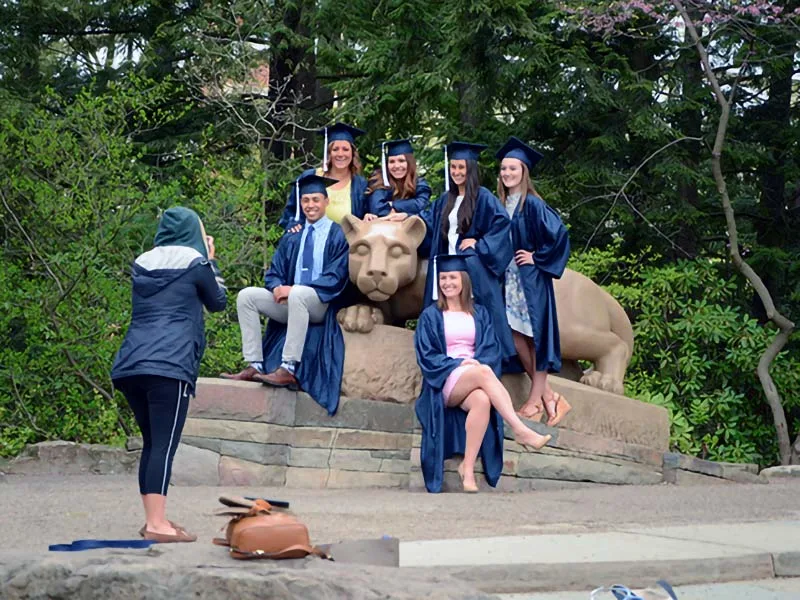
Penn State's Picture-Perfect Landmark
The Nittany Lion Shrine at the University Park campus is recognized as one of the most photographed landmarks in the entire state. This beloved touchpoint not only symbolizes Penn State’s spirit, but also stands as a picturesque attraction that draws visitors from near and far.
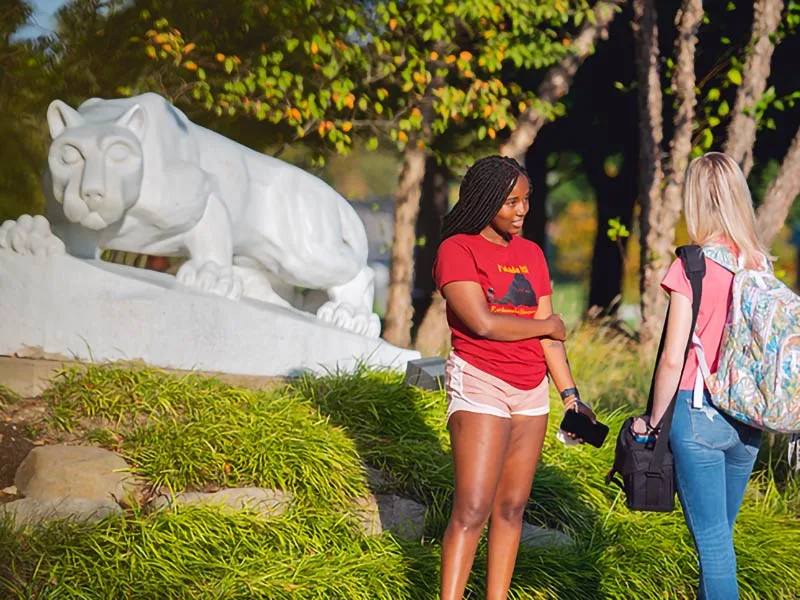
Penn State Beaver
Penn State Beaver’s shrine sits near the center of campus, situated on 105 wooded acres just 40 minutes from downtown Pittsburgh.
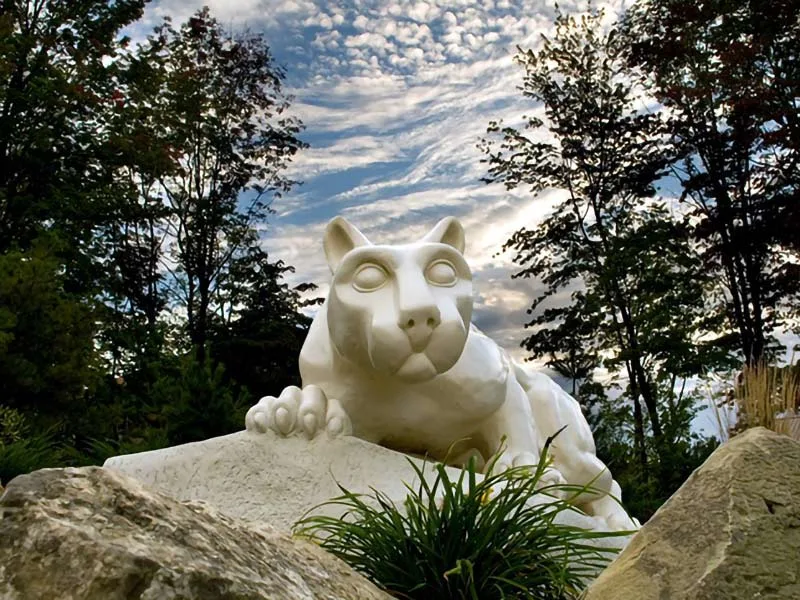
Penn State Behrend
A $690,000 trail improvement project expanded access to Penn State Behrend’s Wintergreen Gorge, which offers 14 miles of hiking and biking trails.
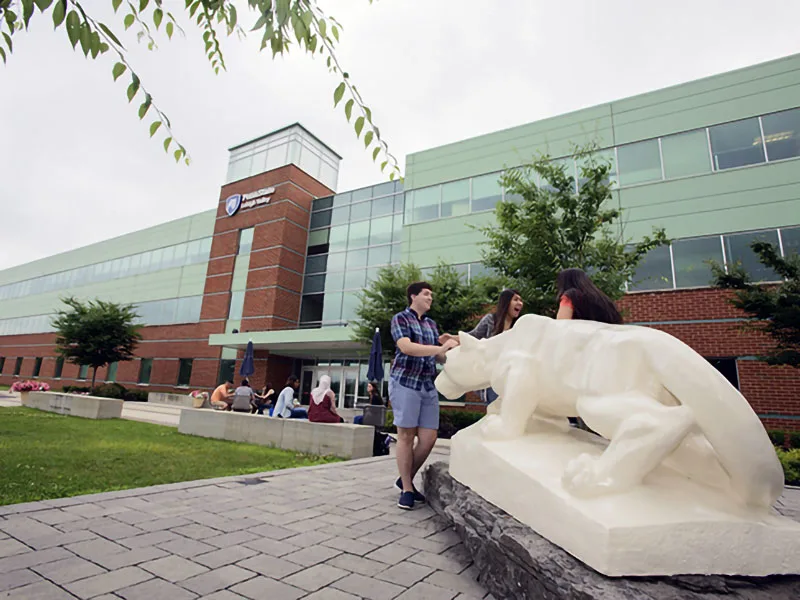
Penn State Lehigh Valley
Back in 2009, the eight-ton Nittany Lion statue was moved to transition from Penn State Lehigh Valley’s old campus in Fogelsville, to the new campus in Center Valley.
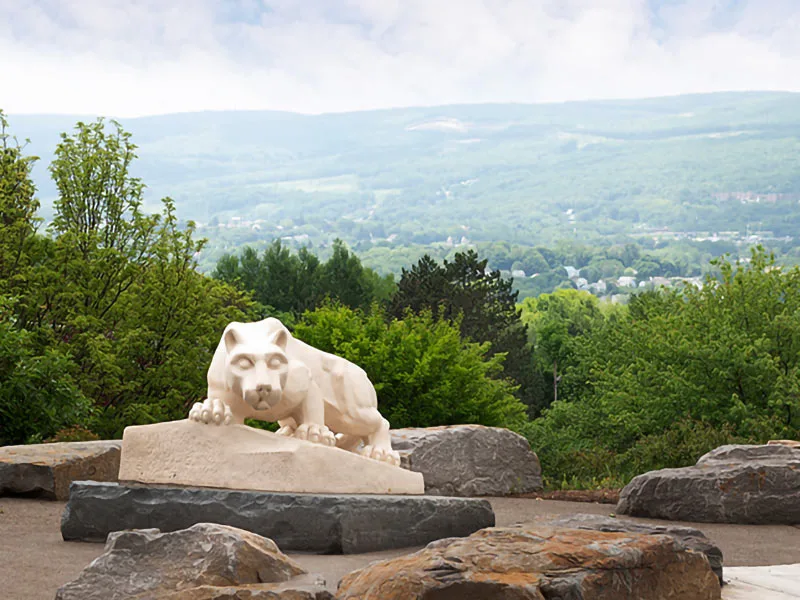
Penn State Scranton
The view of the surrounding West Mountain range can be seen from anywhere on Penn State Scranton’s campus but is most visible from the Nittany Lion Shrine area, overlooking the Multipurpose Building, and from the floor-to-ceiling windows in The View Cafe in the Study Learning Center.












